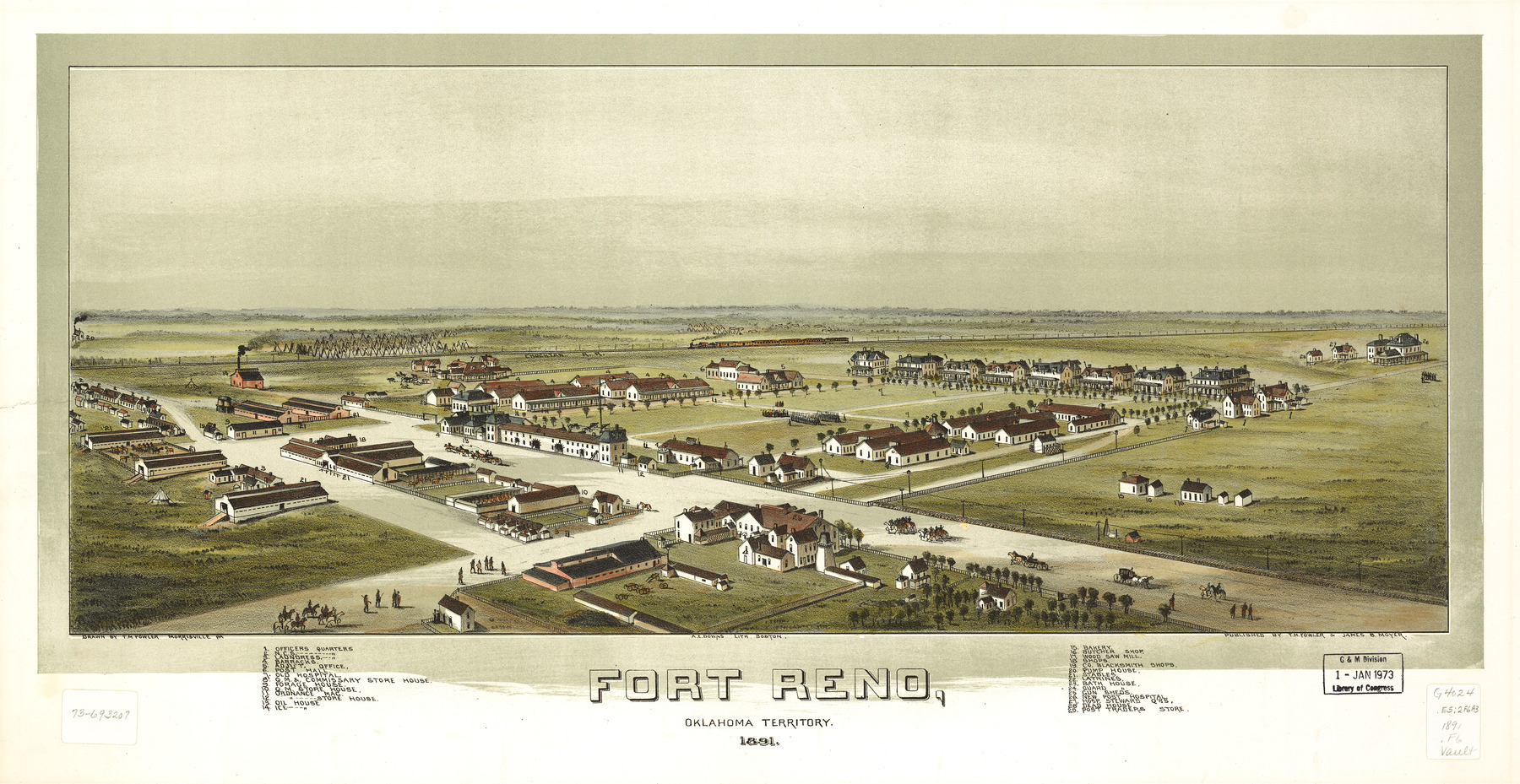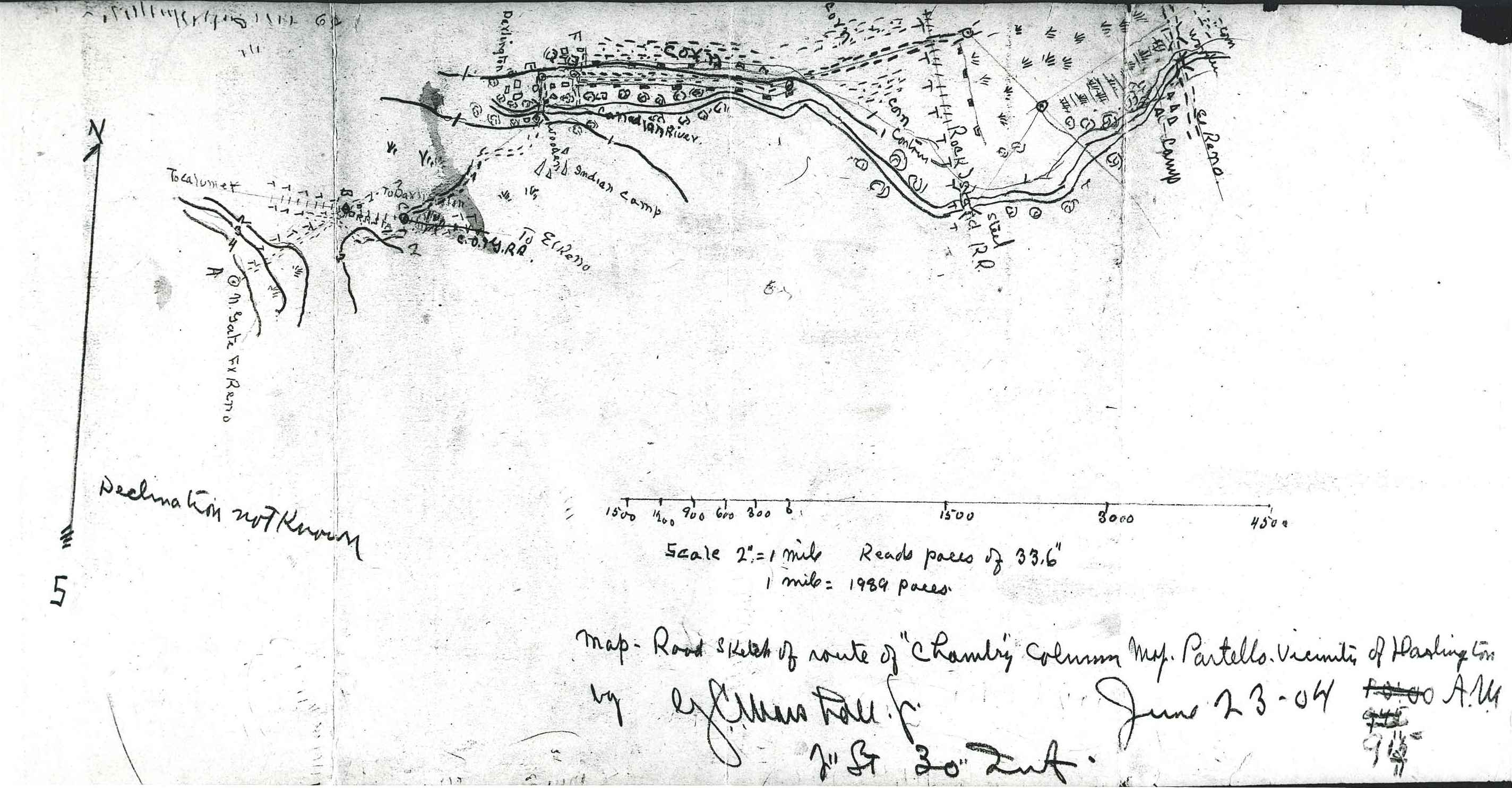 A few days after Christmas in December 1903 George C. Marshall and his detachment of Company G, Thirtieth Infantry, arrived for a routine assignment at Fort Reno in Oklahoma Territory. According to author William Frye in his 1947 biography Marshall: Citizen Soldier, Marshall noticed the Ninth Cavalry “Buffalo Soldiers” stationed there and “lectured his own men carefully on the behavior he expected of them to prevent even a hint of a racial clash,” though there is no written record of his remarks. His wife Lily joined him at Fort Reno and the two settled in for life on “an old frontier post,” according to Marshall. There was not a lot to occupy the soldiers except drills, inspection and garrison school. Marshall avoided boredom and lack of any combat training by perfecting his horsemanship and hunting. Marshall told biographer Forrest Pogue, “The hunting was superb. We went shooting almost every day of the year for something or another,” and he once brought home twelve quail in a half an hour’s worth of shooting.
A few days after Christmas in December 1903 George C. Marshall and his detachment of Company G, Thirtieth Infantry, arrived for a routine assignment at Fort Reno in Oklahoma Territory. According to author William Frye in his 1947 biography Marshall: Citizen Soldier, Marshall noticed the Ninth Cavalry “Buffalo Soldiers” stationed there and “lectured his own men carefully on the behavior he expected of them to prevent even a hint of a racial clash,” though there is no written record of his remarks. His wife Lily joined him at Fort Reno and the two settled in for life on “an old frontier post,” according to Marshall. There was not a lot to occupy the soldiers except drills, inspection and garrison school. Marshall avoided boredom and lack of any combat training by perfecting his horsemanship and hunting. Marshall told biographer Forrest Pogue, “The hunting was superb. We went shooting almost every day of the year for something or another,” and he once brought home twelve quail in a half an hour’s worth of shooting.
 Marshall’s company duty was as an Engineer and Ordnance Officer until he was assigned to secretly map two thousand square miles of Texas from Fort Clark west along the Rio Grande towards Sanderson, Texas. Marshall would later tell Pogue “this was the hardest service I ever had in the army” and recounted 130-degree days walking the railroad tracks and once riding eighteen hours over a distance of fifty miles with no water, “an endurance contest of the first class.” He had dropped thirty-five pounds by the time he returned to Fort Reno in 1906.
Marshall’s company duty was as an Engineer and Ordnance Officer until he was assigned to secretly map two thousand square miles of Texas from Fort Clark west along the Rio Grande towards Sanderson, Texas. Marshall would later tell Pogue “this was the hardest service I ever had in the army” and recounted 130-degree days walking the railroad tracks and once riding eighteen hours over a distance of fifty miles with no water, “an endurance contest of the first class.” He had dropped thirty-five pounds by the time he returned to Fort Reno in 1906.
His remaining time at Fort Reno was “a very trying period because the commanding officer was exceedingly difficult.” Marshall had been assigned the job of post quartermaster and commissary officer. When reflecting on his time there Marshall said “The main thing was I had a very difficult job, and there wasn’t very much understanding of it by the junior officer, not in age but in rank, at headquarters…it made it very difficult for the young officer out in the field. But it was part of the game and it was a great lesson to me, and a very valuable one…There was a continual picking up on things, and I was rather given to analysis of why and wherefore and so on, which unconsciously in the end was rather helpful.”
When the command moved to Fort Leavenworth for maneuvers, Marshall found himself the lone officer at Fort Reno with the remaining army wives, who lived in shabby, sub-par family housing. Marshall told a soldier’s wife he would have her house painted however she liked if she cleaned up her messy yard and pretty soon all of the houses on “Soapsuds Row” were fixed-up and re-painted. If Marshall left any sort of mark on Fort Reno, it was one of raising the morale, a passion of Marshall’s that would define his military and civilian careers.
If you like reading our blogs, please support us by becoming a member of the Foundation or making a donation.
